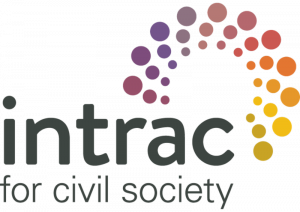Are Gen Z better equipped to reject fake news? Or are they easier to manipulate? Young people function on different frequencies than other generations when it comes to news, so the best way to counter disinformation amongst them is to keep them better informed, in their style.
I grew up in Romania, a country at that point struggling through the transition during the 90s, after the revolution that took down the communist regime led by the dictator Nicolae Ceaușescu. I was surrounded by printed newspapers and TV talk shows. Our classrooms would fill with the smell of fresh newspapers and we would get from them everything from news about music, stars, and politics. We would have discussions during the breaks about politicians and the ”influencers” of the era and argue about our beliefs.
The times were bad, but the hunger for information was immense. My father had a publishing house in the 1990s, and I remember my home being sometimes a storage for the new prints. I was surrounded by everything from newspapers to small brochures, and I loved it.
Now, the younger generations are in the process of rejecting the news. Primarily because they don’t feel the older generations (millennials, Gen X or boomers) are talking to them. And they are perfectly right. For generations born with social media a click away, used to interaction, careful targeting and adapted content, mainstream media is a dinosaur.
The Romanian reality

When The Digital News Report was published, the data showing that 1 in 5 young people (18-24 years old) use TikTok to get their news has created a lot of buzz in the journalism and activist bubble. Some people contest them, some are scared of the results. The fear comes from the fact that besides TikTok being a controversial platform, it is one that favors entertainment and it is a completely different environment for the media. The reality presented in the report. I think, is even worse on the ground.
For over three years I have coordinated new media projects for young people in Romania. We started with a magazine and then moved on to news explained on social media, Instagram and TikTok, with the target audience between 16 and 24 years old. Gen, știri, an outlet I co-founded, now reaches one in four young Romanians monthly. This shows how badly the Romanian market needed this type of project.
The scary part is that young people are telling us that they are understanding key world events, like the full-scale invasion of Ukraine, through our posts. The lack of information they feel is so great that Gen, știri is for them what big mainstream media was for my generation when we were growing up.
As an activist and new media youth project coordinator, I sometimes feel like an agent of disinformation. Throughout the year, I am doing tens of workshops with young people across Romania, mainly media literacy and civic engagement, and I find myself often to be the one who introduces them to conspiracies or fake news. Why? Because they are not interested in news, so the disinformation campaigns hardly reach them.
Thus, the real struggle is not to counter disinformation, but to inform the younger generations, so that they better understand the world they live in and care for it.
The future shape of information

I was in a workshop in a small town on the Danube with over 15 highschool girls, and I played for them a video with the most famous news anchor in Romania. She was presenting a reporter on the ground in Ukraine, discussing an attack done by the Russians with many victims. After it ended, I asked them how they felt about what they saw. They told me it is fake news – because both the anchor lady and the reporter on the ground were not displaying any emotions. And if that would have been real, it would have been impossible to be so cold. Being such a feelings-focused generation, they understand communication always to be delivered with this component. Their alphabet includes a separate chapter for emotions, and the sooner we understand that, the sooner we will reach a path towards them.
So why are the younger generations not affected by disinformation so much in my opinion? Not because they have a special resistance to it, not because they are born with fake news resistance, but because the news reaches them in a slower rhythm. Their worlds intersect with our news only once in a while. They are aware of many events, but they do not dig into them unless it somehow manages to get more of their attention. It is both a challenge and an opportunity.
The danger lies in them being unaware of many of the discussions and news, so they can be manipulated by populists or extremists far easier. The opportunity lies in the fact that if we give them the news in the shape they need, they will react so much better and be more prepared for when the fake news reaches them. And it is ours to take.
Disclaimer: This article was originally published on The Fix Media website.































